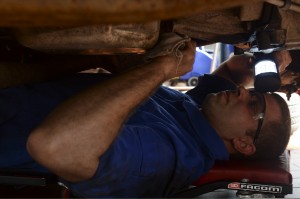
The U.S. is moving ahead in oil production volume with the existing pipelines and new remote areas. Increasingly companies are using semi-trucks to transport crude oil and drilling waste by-products.
Government agencies, such as the U.S. Department of Transportation, ensure that motor vehicle oil transport is regulated, including the routine maintenance and inspection.
The regulation requirements for routine maintenance of oil transportation vehicles has changed over the years since the use of petroleum as fuel began.
The first road transportation vehicle that distributed oil in the U.S. was the horse-drawn tank wagon, which later changed to a non-pressurized tank truck. Today, this handles transfers from one oil distribution site to a service station or smaller terminal for redistribution.
Also used for transport is the pressurized tank truck for carrying oil-related products, chemicals and additives common in the oil and gas industry.
Vehicles that transport oil and related chemicals are required to maintain safety standards because of the potentially harmful impact of an accident or malfunctioning vehicle.
Several useful tips for maintaining an oil truck that help meet preventive maintenance regulations are the following:
- Maintain starting and charging electrical connection performance. Use a spray grease to coat the truck starter studs and battery to eliminate moisture and corrosion.
- Purchasing fuel from frequently patronized filling stations with a reputable brand. A station in a remote location may not receive a daily fuel delivery, which increases the possibility that the fuel is bad.
- Routinely polishing aluminum at least annually and washing and waxing the exterior on the vehicle. This will avoid the accumulation of soil and environmental chemicals that can cause corrosion and irrevocably harm its appearance, particularly following the winter season when salt and snow melting chemicals can accumulate on the surface.
- Tire rotation is especially essential for the truck’s rear drive tires that wear more quickly compared with the front tires. In fact, regular rotation may add 60,000 miles to the life of your drive tires.
- Avoid the onset of insidious rust. Use a can of spray paint or a rust protectant and spray any areas that appear vulnerable to rust in between paint and exterior maintenance.
- Check tire pressure weekly, which can increase fuel mileage, improve steering and avoid excessive punctures and pothole damage.
- Following a driving break that lasts a few days or longer, remove debris, wasps or insects that can build nests in the fuel vent, which can block fuel transport.
- Check the brake pads and apparatus frequently to avoid higher maintenance costs.
- Do not park on a hill so that one side is more elevated than the other if the truck has dual fuel tanks. The fuel can shift to the lower side, and can intake air when the engine ignites and cause damage. Instead, if you need to park your truck on an incline, elevate the front or back rather than one side.